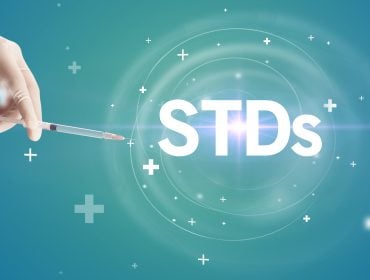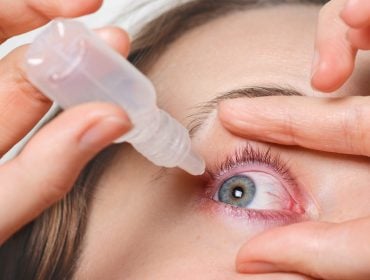Everything About Herpes 1 & 2 and HSV Testing
Herpes is a virus with multiple strains; two strains, HSV-1 and HSV-2, cause oral and genital herpes. Other common diseases caused by various herpes strains include chickenpox or shingles (caused by herpes zoster virus) and Kaposi’s sarcoma (caused by herpes virus 8). Herpes viruses infect the skin and/or mucous membranes. The origin for the name herpes is derived from a Greek word meaning to crawl or to creep, which describes the nature of the virus– Once the virus infects a cell, it “crawls or creeps” along nerve pathways until reaching nerve clusters (also known as dorsal root ganglia) of the spinal cord.
An individual can be infected by both herpes 1 and herpes 2. In fact, approximately half of all new cases of genital herpes in the United States are caused by oral herpes infections.
Herpes 1 and 2 can be contracted during vaginal, anal or oral sex. The initial outbreak of either virus strain can result in flu-like symptoms, including fever, swollen lymph nodes and body aches.
What is HSV-1? 
HSV-1 can be contracted from infected bodily fluids, including semen, vaginal fluid, saliva, or herpes lesions, sores or blister fluid. Upon entering a cell, the infection often does not cause any symptoms. If the virus destroys the host cell during replication, sores or blisters filled with fluid appear. Scabs form over the sores or blisters once the fluid is absorbed, then the scabs disappear without scarring. Once the virus makes its way to the dorsal root ganglia, it becomes inactive for an unknown period of time. The virus becomes active again at unpredictable times, causing shedding. One-third to half of all shedding instances show no symptoms.
What is HSV-2?
 HSV-2 is also a viral STD, and typically results in sores or lesions on the genitals, anus or upper thighs. A case of either HSV-1 or HSV-2 is called genital herpes when it affects the genitals or the genital area. Cases of genital herpes are usually caused by the HSV-2 strain, but HSV-1 cases of genital herpes are becoming more and more common.
HSV-2 is also a viral STD, and typically results in sores or lesions on the genitals, anus or upper thighs. A case of either HSV-1 or HSV-2 is called genital herpes when it affects the genitals or the genital area. Cases of genital herpes are usually caused by the HSV-2 strain, but HSV-1 cases of genital herpes are becoming more and more common.
HSV-2 can be contracted from infected bodily fluids, including semen, vaginal fluid, saliva or herpes lesions, sores or blister fluid. Genital herpes can be contracted while receiving oral sex with someone who has oral herpes. Upon entering a cell, the infection often does not cause any symptoms. If the virus destroys the host cell during replication, sores or blisters filled with fluid appear. Scabs form over the sores or blisters once the fluid is absorbed, then the scabs disappear without scarring. Once the virus makes its way to the dorsal root ganglia, it becomes inactive for an unknown period of time. The virus becomes active again at unpredictable times, causing shedding and sometimes lesions or sores. Genital herpes is easier to transmit during an active infection when lesions or sores are present, however, it can be transmitted when no symptoms arise. One-third to half of all shedding instances show no symptoms. If symptoms do appear, they are often worse during the initial outbreak than recurring outbreaks.
Because both strains of the herpes simplex virus often result in no symptoms at all, those infected do not always know they have it and unwittingly transmit it to their partner(s).
HSV-1 and HSV-2 are distinguishable by their genetic makeup of different surface proteins. Neither strain is curable, but treatment options are available to help reduce the severity of symptoms and shorten the length of outbreaks.
Condoms can help prevent the spread of herpes in some cases but are not always 100 percent effective at preventing herpes since they do not always cover the entire infected area.
Touching herpes sores or the fluids from the sores may lead to transferring herpes to another part of your body, such as your eyes.
Some herpes viruses can cause meningitis or encephalitis (inflammation of the brain itself, which is much more serious). HSV encephalitis is mainly caused by HSV-1, whereas meningitis is more often caused by HSV-2. Herpes viruses have been linked to Recurrent Lymphocytic Meningitis (Mollaret’s meningitis), which is characterized by sudden attacks of meningitis symptoms that last for 2-7 days and are separated by symptom-free (latent) intervals lasting for weeks, months or years.
Herpes and Pregnancy
Typically, oral herpes does not affect pregnancies. Although published reports on oral herpes disease in pregnancy remain scarce and no clear management guidelines exist, rare cases of gingivostomatitis (an infection of the mouth and gums that leads to swelling and sores) have been reported during the first trimester and are thought to be linked to oral herpes.
Genital herpes, on the other hand, can be very dangerous to an infant during childbirth. If the mother has an active infection (whether or not symptoms are present), the baby can contract the virus. If the baby contracts the virus during birth, it can affect the skin, eyes, mouth, central nervous system, and/or even spread to internal organs via disseminated disease which can cause organ failure and lead to death. Disseminated diseases that result can include hepatitis, pneumonitis, disseminated intravascular coagulation, or a combination, with or without encephalitis or skin disease. To prevent transmission to the infant, doctors will perform a C-section (cesarean section) delivery. Treatment of lesions during pregnancy involves antiviral medication.
According to the American College of Obstetricians and Gynecologists, “women who have their first genital herpes infection in late pregnancy (whether symptomatic or asymptomatic) and who give birth vaginally have a high risk (30–60%) of transmitting the virus to their infants at the time of delivery. Similarly, nonprimary first-episode HSV infection occurring late in pregnancy also has a high risk of vertical transmission. The risk of transmission during a vaginal delivery is much lower with recurrent infection (less than 2–5%). Currently, most newborns infected with HSV are delivered to women who have asymptomatic or unrecognized infections. Genital herpes infection is classified as primary when it occurs in a woman with no evidence of prior HSV infection (ie, seronegative for both HSV-1 and HSV-2), as a nonprimary first episode when it occurs in a woman with a history of heterologous infection (eg, first HSV-2 infection in a woman with prior HSV-1 infection or vice versa), and as recurrent when it occurs in a woman with clinical or serologic evidence of prior genital herpes (of the same serotype).”
After delivery, breastfeeding is considered safe unless there is a herpes lesion or sore on the breast.
Herpes Simplex 1 and 2 Testing
Antigens are foreign substances such as viruses or bacteria that cause your immune system to respond. Thus, HSV-1 and HSV-2 viruses are antigens and the body’s immune system creates antibodies in response to these antigens to fight or neutralize them. Antibodies are also called immunoglobulins (Ig). Antibodies are always present, whether you are having an active outbreak or not. You can have the test anytime.
The testing methods for HSV-1 and HSV-2 include:
Direct fluorescent antibody (DFA)
- Direct microscopic examination (nonculture) of virus-infected cells: Impression smears of tissues, lesion/ulcer scrapings and swabs, or upper respiratory tract swabs.
- Used to distinguish HSV-1 from HSV-2.
- Generally, this test is not as sensitive as a cell culture.
Immunoblot (IgG)
Secure and Confidential
STD testing services
The fastest results possbile - available in 1 to 2 days
- Blood test
- Also known as a Western Blot (WB)
- Qualitative assay that uses an immunoblot format for the differentiation of herpes types 1 and 2 IgG antibodies. IgG antibodies are the most abundant type of antibody; they are found in all body fluids and protect against bacterial and viral infections.
- Most accurate form of HSV-1 and HSV-2 testing.
- Accurate 99 percent of the time because once infected, antibodies are always present, whether you are having an active outbreak or not, so this test can be done at any time.
Culture and Typing (ELVIS®)
- Enzyme-linked virus-inducible system (ELVIS®) — Cultures positive by ELVIS® are confirmed by immunofluorescent staining.
- Specimens include Vesicular fluid, ulcerated lesions, pharyngeal and throat swabs, urine, cerebrospinal fluid (CSF), autopsy and biopsy material, eye exudates, or vaginal swabs.
Culture Without Typing
- Does not distinguish between HSV-1 and HSV-2.
- Submit one specimen per test requested. Specify the exact specimen source/origin (eg, genital lesion).
- Specimens include Vesicular fluid, ulcerated lesions, pharyngeal and throat swabs, urine, cerebrospinal fluid (CSF), autopsy and biopsy material, eye exudates, or vaginal swabs.
- Specimen is best collected within the first three days following the appearance of a lesion, but no more than seven days.
Enzyme-linked Immunosorbent Assay (ELISA) IgM and Type-Specific IgG
- Blood test for herpes; The blood sample will be sent to a laboratory for analysis via Enzyme-linked Immunosorbent Assay (ELISA). In the lab, a technician adds the sample to a petri dish containing the specific antigen related HSV-1 or HSV-2. If your blood contains antibodies to the antigen, the two will bind together. The technician will check this by adding an enzyme to the petri dish and observing how your blood and the antigen react. If the contents of the dish change color, you may have the condition. How much change the enzyme causes allows the technician to determine the presence and amount of antibody.
- IgM antibodies are found mainly in the blood and lymph fluid; they are the first antibody to be made by the body to fight a new infection.
- Most helpful in determining brand new/primary cases of HSV, but if confirmation is received additional testing (IgG) is necessary to confirm results because IgM testing can be faulty.
- IgM testing is most helpful in determining HSV cases in newborns, not adults.
- An indirect fluorescent antibody (IFA) test is performed at an additional cost if IgM antibodies are confirmed. In the indirect fluorescent antibody method, the specific antibody is allowed to react with the antigen. The non-antibody globulin is then washed off. This is then treated with a labeled antibody to the specific antibody, which results in a combination of this labeled antibody with the immunoglobulin already attached to the antigen.
- The IFA procedure for measuring IgM antibodies to HSV-1 and HSV-2 will detect both type-common and type-specific HSV antibodies. Thus, detection of antibodies to both HSV 1 and HSV 2 may represent cross-reactive HSV antibodies rather than exposure to both HSV-1 and HSV-2.
- The presence of IgM HSV antibodies indicates acute infection with either HSV type 1 or 2. The IgG antibody assay detects IgG-class antibodies to type-specific HSV glycoprotein G (gG), and may allow for the differentiation of infection caused by HSV types 1 and 2. The presence of IgG-class antibodies to HSV types 1 or 2 indicated previous exposure and does not necessarily indicate that HSV is the causative agent of an acute illness.
Chemiluminescent immunoassay (CLIA)
- Blood test; detect IgG antibodies specific to HSV types 1 and/or 2 infection
- There is a considerable homology between HSV-1 and HSV-2 antigens so that antibodies formed against either virus are highly cross-reactive. These assays are based on purified recombinant glycoprotein G-1 (HSV-1) or G-2 (HSV-2) antigens.
DNA Polymerase Chain Reaction (PCR)

- A single test that both detects the presence of HSV DNA and determines which type is present in the positive samples. There is no mechanism, therefore, for testing for HSV-1 without simultaneously testing for HSV-2.
- Specimens include Cerebrospinal fluid (CSF), a swab of lesions, whole blood, serum, plasma, or vitreous fluid.
- This test is intended for use as an aid in the diagnosis of herpes simplex virus (HSV) infections; it also differentiates HSV-1 from HSV-2. PCR testing of blood, serum, or plasma samples is clinically useful only in potential cases of disseminated HSV infection (neonates, immunosuppressed individuals) and not as an aid in the diagnosis of either mucosal or CNS disease.
Key Takeaways:
- Herpes 1 and 2 can be contracted during vaginal, anal or oral sex.
- Oral herpes (typically caused by HSV-1) is a viral STD that lives in nerve cells and results in cold sores or fever blisters on or near the mouth.
- Oral herpes is most commonly transmitted by kissing or sharing drinks or utensils, but can also be contracted from a partner with genital herpes during oral sex.
- Genital herpes (usually caused by HSV-2) is also a viral STD, and results in sores or lesions on the genitals, anus or upper thighs. HSV-2 can be contracted from infected bodily fluids, including semen, vaginal fluid, saliva or herpes lesions, sores or blister fluid. Genital herpes can be contracted during oral sex with someone who has oral herpes.
- Genital herpes can be very dangerous to an infant during childbirth, C-section deliveries are often performed during an active breakout to avoid transmission.
- Herpes can be transmitted even when signs or symptoms are not present. This process is known as “shedding,” and occurs when cells that have the active virus are dropped or shed from the skin. One-third to half of all shedding instances show no symptoms.
- If symptoms do appear, they are often worse during the initial outbreak than recurring outbreaks.
- Neither strain is curable, but treatment options are available to help reduce the severity of symptoms and shorten the length of outbreaks.
- An individual can be infected by both herpes 1 and herpes 2. In fact, approximately half of all new cases of genital herpes in the United States are caused by oral herpes infections.
- IgG testing (Western Blot or Immunoblot) is the best option for accurately diagnosing herpes simplex 1 and 2.
- HSV-1 and HSV-2 lie dormant in nerve cells, and periodically cause “outbreaks” at unpredictable times.
- Condom use is important, but may not always prevent the transmission of herpes since the may not cover all of the infected area.
- Touching herpes sores or the fluids from the sores, may lead to transferring herpes to another part of your body, such as your eyes.
- Get tested for herpes type 1 and 2.
Read Section 7 on Hepatitis B and HBV Testing.
Medically Reviewed by Kaci Durbin, MD, MBA, FACOG on July 28, 2023
Secure and Confidential
STD testing services
The fastest results possbile - available in 1 to 2 days

Tagged
Categorized As
Author: Nick Corlis
Nick Corlis is a writer, marketer, and designer. He graduated from Texas State University in San Marcos, Texas, with a degree in Digital Communications. Nick is proud to be able to help eliminate the stigma of STD testing through his writing and is always trying to advocate the importance of your sexual health. Before STDcheck, his favorite way to develop his writing skills was by accepting various writing jobs in college and maintaining multiple blogs. Nick wears many hats here at STDcheck, but specifically enjoys writing accurate, well-researched content that is not only informative and relatable but sometimes also contains memes. When not writing, Nick likes to race cars and go-karts, eat Japanese food, and play games on his computer.




